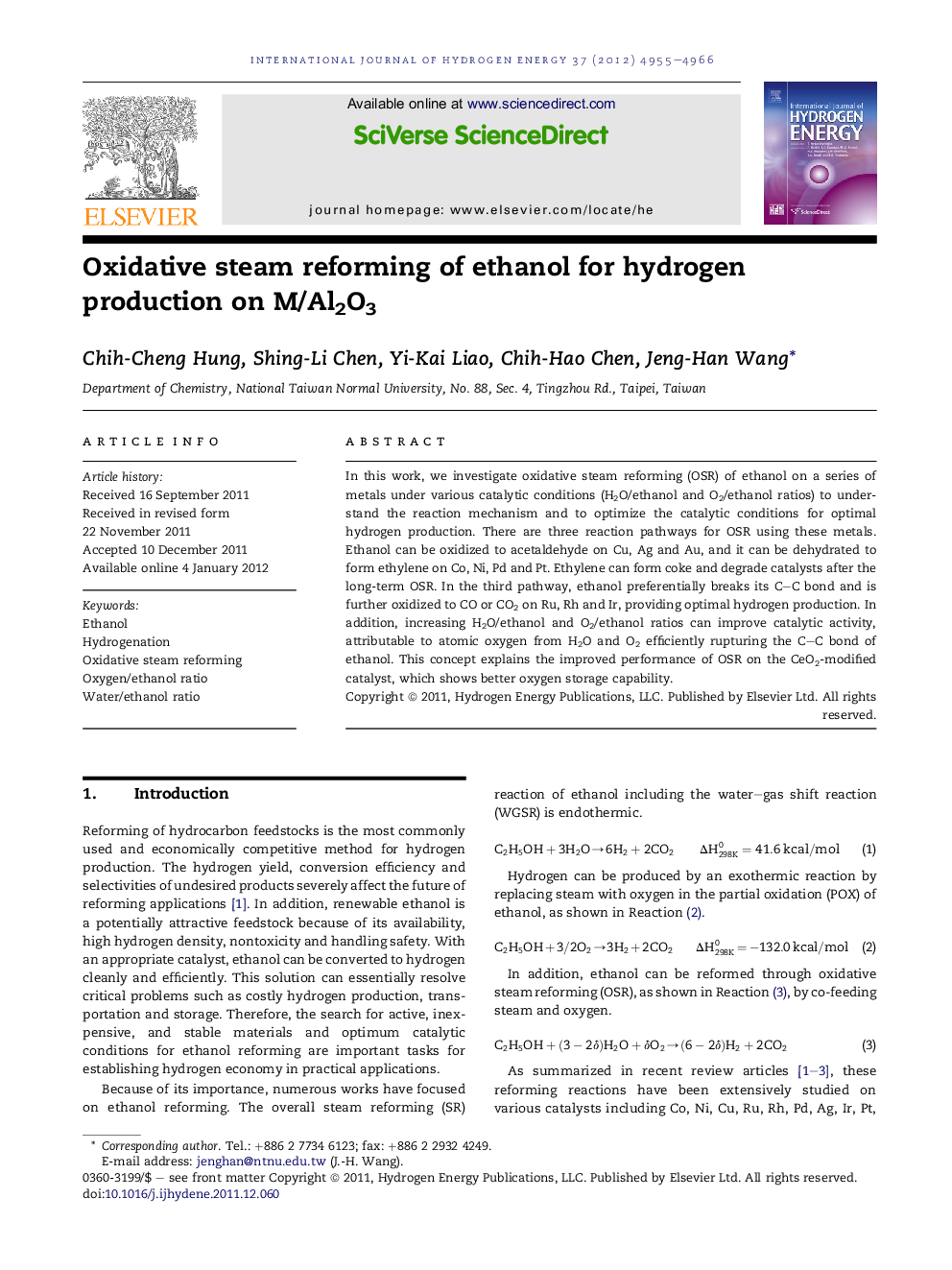| Article ID | Journal | Published Year | Pages | File Type |
|---|---|---|---|---|
| 1271514 | International Journal of Hydrogen Energy | 2012 | 12 Pages |
In this work, we investigate oxidative steam reforming (OSR) of ethanol on a series of metals under various catalytic conditions (H2O/ethanol and O2/ethanol ratios) to understand the reaction mechanism and to optimize the catalytic conditions for optimal hydrogen production. There are three reaction pathways for OSR using these metals. Ethanol can be oxidized to acetaldehyde on Cu, Ag and Au, and it can be dehydrated to form ethylene on Co, Ni, Pd and Pt. Ethylene can form coke and degrade catalysts after the long-term OSR. In the third pathway, ethanol preferentially breaks its C–C bond and is further oxidized to CO or CO2 on Ru, Rh and Ir, providing optimal hydrogen production. In addition, increasing H2O/ethanol and O2/ethanol ratios can improve catalytic activity, attributable to atomic oxygen from H2O and O2 efficiently rupturing the C–C bond of ethanol. This concept explains the improved performance of OSR on the CeO2-modified catalyst, which shows better oxygen storage capability.
► An experimental investigation of oxidative steam reforming of ethanol. ► Ethanol oxidizes to acetaldehyde on Cu, Ag and Au. ► Ethanol dehydrates to ethylene on Co, Ni, Pd, and Pt. ► Ethanol breaks its C–C bond and gives the optimal H2 yield on Ru, Rh and Ir. ► H2O and O2 assist the C–C bond cleavage of ethanol and improve hydrogen production.
